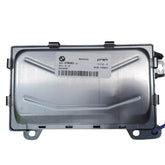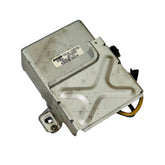Brake light bulbs are a critical safety feature of any vehicle. They alert drivers behind you when you slow down or stop, preventing collisions and ensuring smooth traffic flow. Despite their importance, brake light bulbs are often overlooked when it comes to regular vehicle maintenance. A burnt-out brake light can not only put you at risk on the road but may also result in a traffic citation.
So, how often should you replace your brake light bulb? The answer depends on several factors, including bulb type, usage frequency, and vehicle model. In this blog, we’ll discuss the key aspects of brake light bulb maintenance, signs that indicate it’s time for a replacement, and tips for ensuring your brake lights remain in optimal condition.
How Long Do Brake Light Bulbs Last?
The lifespan of a brake light bulb varies based on the type of bulb used in your vehicle. Here’s a general breakdown:
-
Incandescent Bulbs – Typically last between 700 to 1,000 hours of use. These are the most common but also burn out faster.
-
Halogen Bulbs – Slightly longer-lasting, with an average lifespan of 1,000 to 2,000 hours.
-
LED Bulbs – Can last up to 50,000 hours, making them the most durable option. Many modern vehicles come equipped with LED brake lights.
While there is no universal rule on replacement frequency, most drivers replace their brake light bulbs every 4 to 6 years, depending on how often they use their vehicle.
Signs That Your Brake Light Bulb Needs Replacement
Since brake light bulbs don’t typically burn out all at once, it's essential to look for warning signs, including:
1. Dim or Flickering Lights
If your brake light appears dim or flickers when pressed, the bulb may be nearing the end of its lifespan. This issue can also indicate a loose connection or wiring problem.
2. One Brake Light Not Working
If one brake light stops functioning while the other still works, the bulb is likely burned out and needs replacement.
3. Dashboard Warning Light
Some modern cars have dashboard indicators that alert you when a brake light is malfunctioning. Check your owner's manual to see if your vehicle has this feature.
4. Other Drivers Inform You
Sometimes, other motorists or even law enforcement may notify you about a non-functional brake light. If this happens, replace it immediately to avoid safety hazards.
How to Check Your Brake Lights
Since you can’t see your brake lights while driving, here’s how to check them:
-
With a Helper – Ask someone to stand behind your vehicle while you press the brake pedal.
-
Using a Reflective Surface – Park near a glass window or garage door and check the reflection.
-
DIY Method – Use a smartphone or camera to record the brake lights while pressing the pedal.
Performing this quick check at least once a month can help prevent unexpected brake light failures.
How to Replace a Brake Light Bulb
Replacing a brake light bulb is a straightforward process. Here’s a step-by-step guide:
1. Gather Your Tools
You’ll typically need:
-
A replacement brake light bulb (Check your vehicle’s manual for specifications).
-
A screwdriver (if your taillight assembly requires removal).
-
Gloves (to prevent oil from your fingers damaging the bulb).
2. Locate the Brake Light Housing
Most vehicles have the brake light assembly inside the rear taillight unit. Open the trunk or access panel to reach it.
3. Remove the Old Bulb
-
Twist the bulb socket counterclockwise to remove it.
-
Pull out the old bulb carefully.
4. Install the New Bulb
-
Insert the replacement bulb into the socket.
-
Twist it back into the housing securely.
5. Test the New Brake Light
Before closing everything up, press the brake pedal to ensure the new bulb works properly.
Tips for Prolonging the Life of Your Brake Light Bulb
While brake light bulbs will eventually need replacement, you can extend their lifespan with these simple tips:
-
Use LED Bulbs – If your vehicle supports LED brake lights, consider upgrading for longer-lasting performance.
-
Check Electrical Connections – Loose or corroded connections can cause flickering and reduce bulb life.
-
Avoid Sudden Braking – Frequent hard braking can increase strain on the bulbs and wiring.
-
Perform Regular Inspections – A monthly brake light check can help you identify issues early.
Why Proper Brake Light Maintenance Matters
Maintaining functional brake lights is more than just a legal requirement—it’s a critical aspect of road safety. Here’s why:
-
Prevents Rear-End Collisions – Clear brake signals give drivers behind you time to react.
-
Avoids Fines & Citations – Driving with a burned-out brake light can result in tickets in many states.
-
Enhances Vehicle Visibility – In low-light conditions, working brake lights improve visibility for other drivers.
At Automan, we understand the importance of quality vehicle components. Whether you’re restoring a classic car or maintaining a daily driver, we offer a range of high-quality auto parts, including electronic control units (ECU), transmission control modules (TCM), and other essential components. Keeping your vehicle in top condition starts with regular maintenance—don't overlook your brake lights!
Frequently Asked Questions (FAQs)
1. How often should I replace my brake light bulbs?
On average, every 4-6 years for incandescent or halogen bulbs. LED bulbs can last much longer and may not need replacement for decades.
2. Can I replace a brake light bulb myself?
Yes! Most brake light bulbs are easy to replace with basic tools. Always check your owner’s manual for specific instructions.
3. What happens if I drive with a broken brake light?
Driving with a non-functional brake light can result in fines and increase the risk of accidents. It's best to replace it as soon as possible.
4. Are LED brake light bulbs better than incandescent ones?
Yes. LED bulbs last longer, use less energy, and provide brighter illumination for better visibility.






